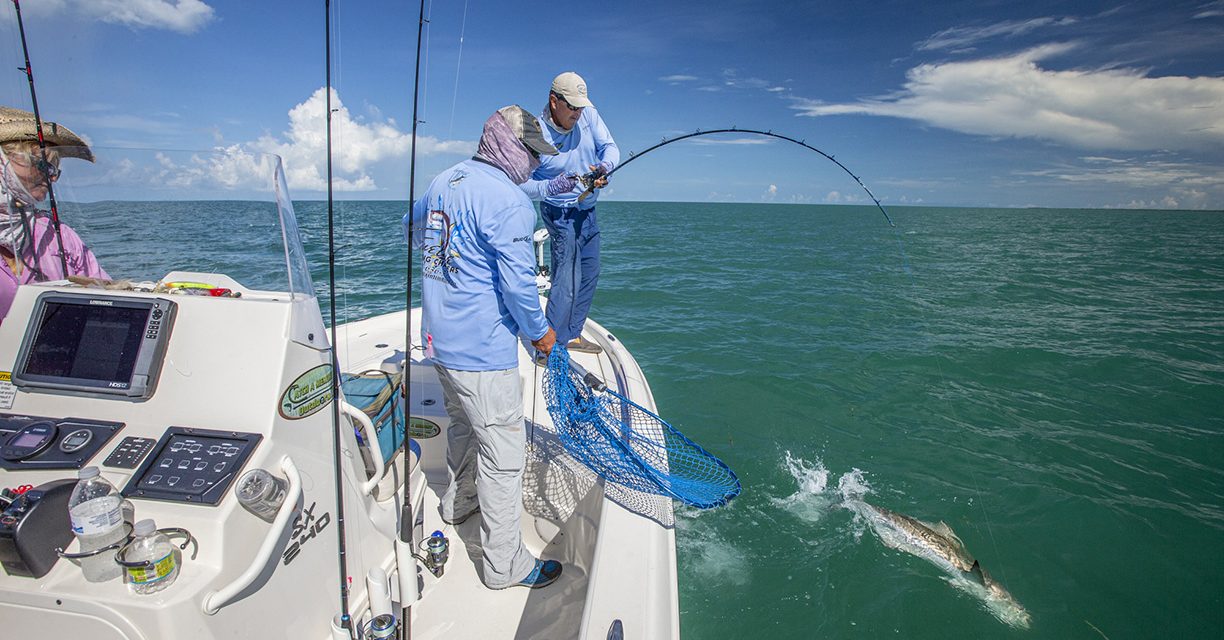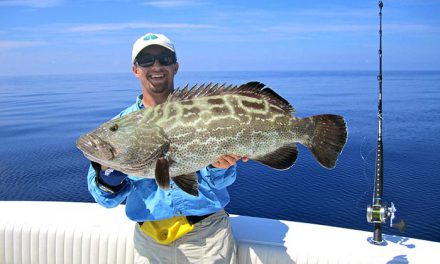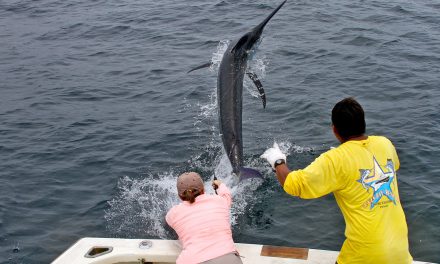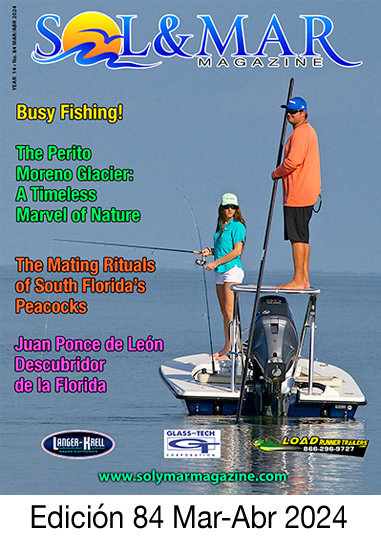By Pat Ford
With all the hoopla going around about the multiple plans to close off a great many sections of Everglades National Park, a lot more attention is being directed to the various wrecks and patches just outside the Park boundaries. These shallow wrecks can be outstanding at times for grouper, snapper, big redfish, snook, cobia, barracuda, jacks, mackerel, occasionally tarpon and unfortunately big sharks and huge Goliath Grouper. Unfortunately, some days they can be deader than a dog’s water dish, but the initial problem is the same as with most wrecks – you’ve got to find them.
I can remember way back around 40 years ago when guys from the fish clubs were lugging junk out past the boundaries of the Park and dumping it in a recorded GPS site. It doesn’t take much to attract fish out in that area…the bottom is just sand and anything that causes any kind of break in the current will attract baitfish which then attract the predators. This plan worked pretty well for a while with only a select few knowing the coordinates and reaping the benefits…until the first hurricane blew in. Bye bye wreck! There are probably still some man-made wrecks out there, some of which are mounds of lobster traps just dumped at the end of the season, but all a lot are major structures that hold up to the massive tidal surges of storms like Wilma and keep holding fish. Capt Randy Towe of Islamorada has over two dozen that he fishes regularly, hopping from one to another till he finds the one holding fish. Way out there, there are some ‘blue holes’ which are amazing at times, but they are a long run in a flats boat so the weather has to be perfect.
One you find one of these secret corners of fish heaven, there are several ways to effectively fish them. There are sometimes schools of permit and/or cobia on the surface, so it pays to have a spinning rod ready while you still trying to pinpoint the structure. At times there are schools of jacks busting bait in the area or turtles…every wreck seems to have its resident turtle. The very first time you spot the wreck on your depth sounder – throw out a buoy, just to be on the safe side. You don’t want to get distracted and have to start looking all over again.
The next step is to anchor up current, so your chum drifts back to the wreck. Frozen ground chum and pilchards or glass minnows can work wonders. Have a throw away buoy for your anchor because you do not want to fight a good fish over the wreck. It’s first instinct may be to run into the debris and cut you off, but the greater risk is that a goliath grouper will eat it. Even though most of these wrecks are in less than 20 feet of water, they still hold goliaths up to 800 lbs. I’ve had goliaths eat 25 lb permit right below the boat and bull sharks eat everything that the giant grouper miss. It can be tough, but the best story comes from Capt Randy Towe who is a regular visitor to these shallow wrecks. One day he brought his friend, Dave Crusiger, out to the Blue Hole. Dave is a jet pilot and an experienced diver and wanted to take a first-hand look at what was living around the rim of the whole; so after they’d caught a few snapper and grouper, Dave decided to hop over the side and see what was really happening below them.
The water is usually pretty murky in the Gulf, but on this particular day, it wasn’t that bad and there wasn’t much current, so over he went. The depth to the edge of the ‘Hole’ is around 40 feet and the actual hole drops to 125’ or more. As Dave worked his way to the bottom, the first thing he noticed was a 600 lb goliath hovering directly under the boat. When he reached the 40’ bottom, he could see dozens of Goliath groupers holding on and just over the edge. There were lots of snapper and grouper, but the goliaths were off the chart size wise. This explained why anything that got hooked and couldn’t be horsed to the surface got eaten. A goliath would suck in its prize and, as soon as it felt the rod tension, it would simply swim down into the safety of the ‘Hole’ and cut the line on the edge.
As he crouched on the edge of the ‘Hole’, Dave looked up at a school of permit swimming overhead, when suddenly he was covered by an immense shadow. It completely blocked out the light and looked like a boat, except it wasn’t a boat – it was a bull shark. A huge bull shark. As he looked up and around, all he could see were sharks….dozens of them. That was the end of his ‘Blue Hole’ diving career. When he got back into the boat, and calmed down, he finally looked at Randy and said: “On a spook factor scale of 1 to 10, that was a 12”. He was in the water less than 8 minutes. If you want to know why it’s next to impossible to land a fish on some of the shallow Gulf wrecks…just ask Dave.
My first trip to one of these wrecks was with Capt Andy Novak of LMR Custom Rods and Tackle in Ft. Lauderdale. We launched out of Chokoloski and ran south looking for pilchards. He had found a new wreck that was loaded with snook just a few days earlier and in was in 15’ of clear water, so he was pretty excited. We got lucky and netted up a bunch of pilchards in a relatively short time and headed offshore.
About a half hour later we came up to a dark shape on a light colored bottom. The surface was ruffled by a light breeze, and we could see a dark mass just off the wreck – it was a school of huge shook. Andy set up a drift, threw out a netfull of live pilchards and everything went nuts. I was using a 10 weight fly rod with a full sinking, hi density “striper” line – my favorite combination for deep water fly-fishing. That day we caught over 20 snook on baitfish patterns and at least a dozen of them were over 20 lbs. I’ve never had a day like that in the Gulf before or after and that was many years ago.
On subsequent trips with Andy, we’ve specifically targeted permit. In the summer they school up on the wrecks and can be caught on crab flies pretty consistently, if you can find them. They usually aren’t right over the wreck, but they will come into the chum lie and suck in a live crab. However, the best way to take one on a fly is to look for the big schools that are usually circling the wreck, sometimes a good distance out. The strategy is to drift down on the school and throw a fly right into the middle of them. I use either a slow sinking clear line or the fast sinking striper line with six feet of leader tapered to 20 lb florocarbon on a 10 weight outfit. My favorite crab fly is a Velcro pattern tied by Capt. Chris Dean in Miami.
The normal way to fish these shallow wrecks is with a sturdy spinning rod with 30-50 lb braid and a florocarbon leader. Live pinfish, pilchards and crabs are best for the bigger fish. If you use shrimp, the little guys will eat you alive and the goliaths will destroy them and your tackle.. I like to bounce the baits on the bottom with a 3/8oz jig head.
If you want to try a day on one of these shallow Gulf wrecks, give Randy Towe a call at 305-394-2667 or go looking for them yourself. Good luck with that second idea.
























































